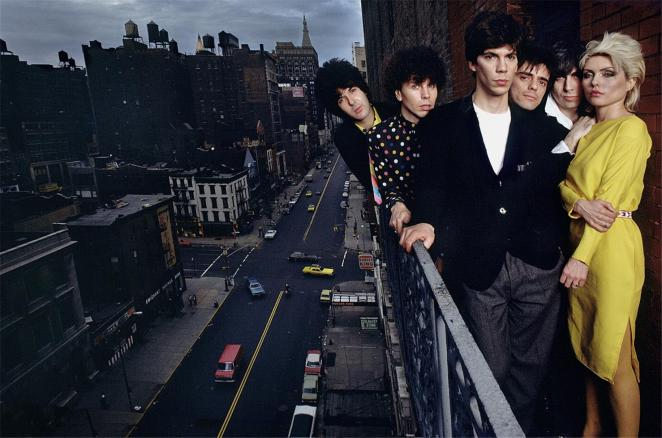“The Chelsea was like a dollhouse in the ‘Twilight Zone,’ with a hundred rooms, each a small universe,” recounted Patti Smith in her 2010 book “Just Kids.” Living and loving and writing inside Hotel Chelsea, where the music poet lived 1969 through 1971 with then-partner and life-long soulmate artist Robert Mapplethorpe. There, both created and found myriad inspirations for their art. The Chelsea was also a creative precursor to Smith’s 1975 debut Horses and a place she would later reside again on her own in the ’90s. Before Smith and Mapplethorpe planted themselves in Chelsea, a young Leonard Cohen, who occupied room 424 in 1968, would later recount a secret rendezvous with a young rocker Janis Joplin—And clenching your fist for the ones like us / Who are oppressed by the figures of beauty / You fixed yourself, you said: Well, never mind / We are ugly but we have the music—in his 1974 song “Chelsea Hotel #2.”
Videos by American Songwriter
Smith and Mapplethorpe and Cohen joined the many who lived within the ranks of artsier misfits first drawn to the Chelsea Hotel by the 1950s and ’60s, including former denizens Bob Dylan, William Burroughs, Dylan Thomas, and Jack Kerouac, all writing their many stories and songs within the Chelsea walls.
“I loved this place,” said Smith, “its shabby elegance, and the history it held so possessively.”

Recapturing the literary and artistic essence of a bygone era of artists, The Morrison Hotel Gallery is showcasing the photographic history of the Chelsea Hotel and its West Coast counterpart the Sunset Marquis—a temporary home to Bob Marley and the Wailers during their legendary shows at The Roxy, along with passersby The Clash, LA-based The Runaways, and even New York punks like Blondie and The Ramones welcomed a visit to the sunnier side—in the upcoming exhibit No Vacancy, opening April 28.
The exhibit, opening simultaneously at the New York and Los Angeles Morrison Hotel Gallery locations, features a collection of images of former tenants and guests with iconic and some never-before-seen images of the Chelsea Hotel by photographers Bob Gruen, Ross Hlafin, Norman Seeff, Jake Chessum, Lawrence Fried, Kate Simon, Kim Gottlieb, Robert Knight, Timothy White, Tony Notarberardino, David Gahr, Alan Aldridge, and Allan Tannenbaum, while the Sunset Marquis is documented in photos by Gruen, Halfin, White, and Knight, along with Richard E. Aaron, Brad Elterman, Danny Fields, and Kim Gottlieb.
“The coincidental legends of the Hotel Chelsea and Sunset Marquis neither begin nor end with the coterie of luminaries that have traipsed their halls,” said Daniel Walters, content director at Morrison Hotel Gallery. “Take, for instance, Leonard Cohen’s ‘Chelsea Hotel #2,’ a deftly earnest chronicle of time-place particulars, the song continues to grapple with the creative spirit of something far more elusive, more aspirational.”

Located at 222 West 23rd St., the Chelsea first opened in 1883 and transformed into a hotel by 1905, a heavenly haven welcoming artists, writers, poets, city dwellers and transients, miscreants, and the most eccentric of beings. Built 80 years later at 1200 Alta Vista Rd., the more rock and roll Sunset Marquis, captured its own collection of long- and short-term musical denizens, infamous stories and other tales birthed around the hotel swimming pool. Nearly 60 years later, the Marquis remains a home-away-from home for actors, artists, writers, entrepreneurs and beyond.
In the’70s, bands like Queen, Led Zeppelin, David Bowie, Bruce Springsteen slept (perhaps), raged and created at the Marquis. Steven Tyler and Julian Lennon wrote “Someday” in the ground floor villa, and The Smashing Pumpkins’ Billy Corgan and Linda Perry later penned “Sunset Marquis,” an homage to the hotel, for Hole.
“By personifying these two landmarks at the forefront of a cross-canonical conversation, my hope for No Vacancy is the presentation (and preservation) of non-linear, duplicitous histories which leave room for contemporaneous rumination and reinterpretation,” said Walters. “In other words, what exactly is remembered well in the Chelsea Hotel or the Sunset Marquis? What may be said for the staying power of thin air, of remarkable lives lived at once the center and margins of a respective era’s glamour?”
